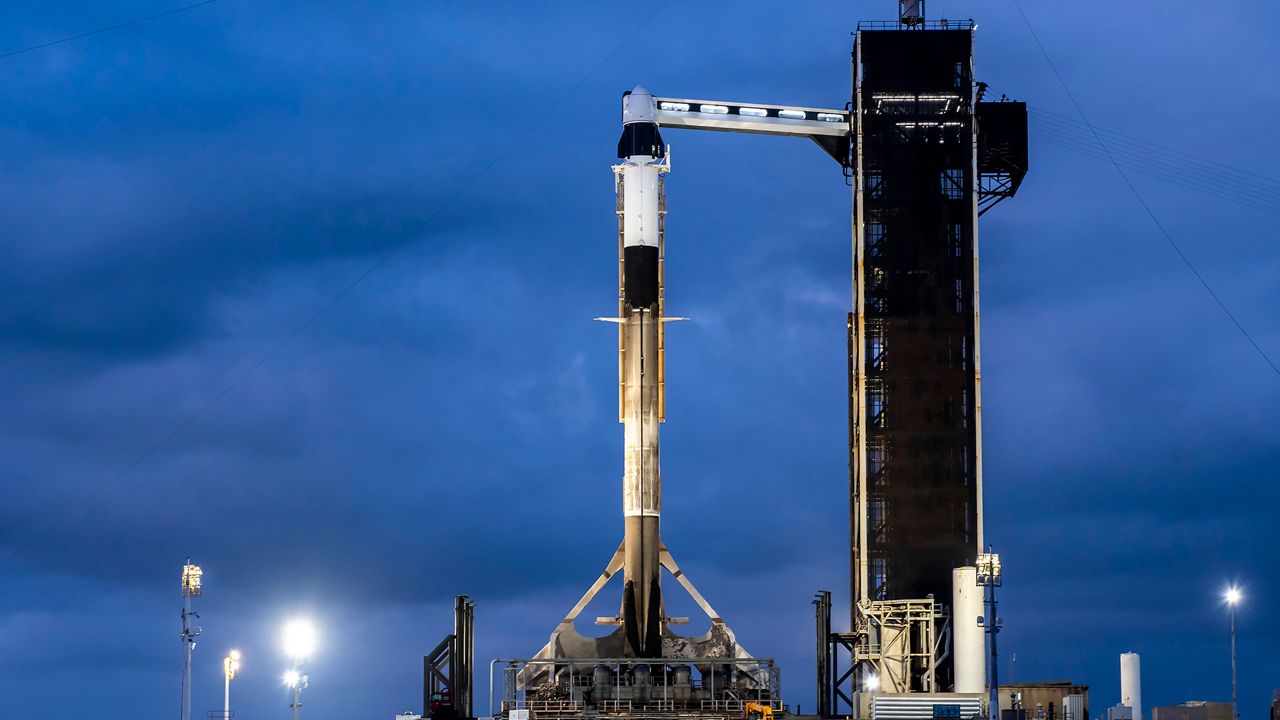CAPE CANAVERAL SPACE FORCE STATION — Space lovers far and wide got to see United Launch Alliance’s Delta IV Heavy rocket take off for the last time on Tuesday afternoon.
What You Need To Know
- The launch went off at 12:53 p.m. ET, Tuesday, April 09
- The liftoff took place at Space Launch Complex-37 at Cape Canaveral Space Force Station
- This was the Delta IV Heavy’s 16th and final launch
- Get more space coverage here ▶
- 🔻Scroll down to watch the launch🔻
- The liftoff took place at Space Launch Complex-37 at Cape Canaveral Space Force Station
- This was the Delta IV Heavy’s 16th and final launch
The final launch of @ulalaunch’s #DeltaIVHeavy rocket! #ULA will be retiring this rocket.
— 🚀Anthony Leone🌕 (@AnthonyLeone) April 9, 2024
Find out more in my article @MyNews13: https://t.co/mTbO3tqadr pic.twitter.com/RktzV7tir4
The 235-foot rocket took off from Space Launch Complex-37 at Cape Canaveral Space Force Station at 12:53 p.m. ET.
It sent up the secret NROL-70 mission for the National Reconnaissance Office.
The 45th Weather Squadron gave a 90% chance of good liftoff conditions, with the only concern being the cumulus cloud rule.
Unlike SpaceX rockets, ULA’s Delta IV Heavy rocket does not land.
#TheDeltaFinale // Wonder when you will see the ultimate #DeltaIVHeavy near you? Our visibility graphic shows when the rocket will rise into view along the East Coast during the @NatReconOfc's #NROL70 mission.
— ULA (@ulalaunch) April 6, 2024
Launch info. and updates: https://t.co/0ZAppUgxBy pic.twitter.com/ZMGfMnbv92
The first launch attempt
Originally, it was all set to go on Thursday, March 28, at 1:40 p.m. ET, but the launch time was pushed back a few times due to poor weather.
But after a hold in the countdown at around 2:45 p.m. ET, ULA announced a scrub because of "an issue with the gaseous nitrogen pipeline which provides pneumatic pressure to the launch vehicle systems. The team initiated operations to secure the vehicle," it stated.
ULA had hoped to launch the following day — Friday, March 29, at 1:37 p.m. ET — but it was unsuccessful.
ULA CEO Tory Bruno expanded on the issues on the social media platform X, formerly known as Twitter.
Not really a SLC 37 problem. NASA operates a GN2 pipeline as a service to several pads. And, yes, there is a "gas meter" so companies pay for what they use. The issue is with pumps on that pipeline. They are working it hard right now. https://t.co/Xcw0zoFIt5
— Tory Bruno (@torybruno) March 31, 2024
About the Delta Heavy rocket
It was the 16th and final launch of the Delta IV Heavy rocket. In its near 20-year history, it has done primarily classified missions for the U.S. and all 15 missions were considered successful.
“United Launch Alliance is preparing to launch the final Delta IV Heavy rocket this week for the National Reconnaissance Office. Dating back to 1960, the Delta program enabled the original GPS satellite constellation and numerous scientific pursuits, including (eight) Mars missions for NASA,” according to the company.
In fact, the Delta IV heavy rockets have been involved for both the U.S. Space Systems Command (SSC) and NRO.
Plus, these massive launch vehicles have been used for scientific missions, such as the Orion spacecraft and the Parker Solar Probe.
The Delta IV Heavy rocket was easily recognized in the Space Coast’s skies for its white-and-orange color scheme and its three first-stage rocket boosters, also called common booster core tanks.
The production of the Delta IV Heavy hailed from various parts of the country and different companies contributed to its creation, ULA noted:
1. Canoga Park, CA
RS-68A Engine Fabrication at
Aerojet Rocketdyne, an L3Harris Technologies Company
2. Denver, CO
ULA Headquarters &
Design Center Engineering
3. Decatur, AL
Booster, Payload Fairing and
Second Stage Fabrication
4. West Palm Beach, FL
RL10C-2-1 Engine Fabrication at
Aerojet Rocketdyne, an L3Harris Technologies Company
The last time the Delta IV Heavy decorated Florida’s skies was in June 2023 for the NROL-68 mission.
It should be noted that the NROL-70 mission is the last one for any member of the Delta rocket family. The Delta II rocket had a 29-year career of sending up various missions until it was retired in 2018, ULA stated.
What will replace the Delta IV Heavy, and the company’s Atlas V which is still going strong, is the Vulcan Centaur, which had its first successful maiden launch in January of this year.
As launch preparations continue for #TheDeltaFinale, ULA salutes the generations of current and former Delta teammates who designed, built, assembled and launched this storied family of rockets for the past 63 years.
— ULA (@ulalaunch) March 26, 2024
Learn more about the legacy of Delta: https://t.co/8mK9s0waF1 pic.twitter.com/60sN2i2pSo
About the NROL-70 mission
Not much is known about the classified NROL-70 (National Reconnaissance Office Launch) mission for the NRO. Neither ULA nor NRO revealed what the classified payload is.
Although, SSC did state this in a press release: “Assured Access to Space (AATS) is the program executive office within Space Systems Command that is responsible for delivering next-generation launch and on-orbit capabilities in support of the warfighter, combatant commands, intelligence agencies, civil services, allied nations, and the commercial space industry.”
Senior materiel leader for SSC’s Launch Execution Delta Col. Jim Horne praised the working relationship with ULA.
“We’ve worked alongside ULA and in close coordination with our NRO partners to prepare this Delta IV Heavy, our last Delta ever, and in just a few days the team’s hard work will culminate in this highly anticipated and historic launch,” said Horne in the press release. “These launches place critical capabilities into orbit for our nation and our allies in what are dynamic times for the space community. Every member of our launch team understands what’s at stake and works with care and efficiency to prepare for what’s going to be a tremendous launch.”









